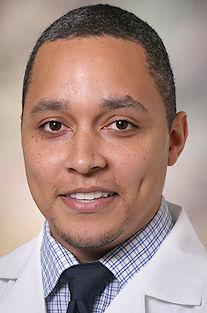
Pain specialists are responding to the epidemic of prescription drug abuse by developing individualized treatment plans for patients with chronic or acute pain.
“We can have an impact on the pain and function,” Johnstown pain specialist Dr. Alcinto Guirand said.
Physical therapy, exercise, ice, heat, stretching, acupuncture, chiropractic treatments and pain medicines with lower risks are among the arsenal of weapons he listed.
“We are always looking for lower-risk, non-opioid options,” Guirand said in Conemaugh Neuroscience and Pain Center at Conemaugh Richland, 1450 Scalp Ave.
For the most severe pain, narcotics remain a valuable tool – in the hands of a trained specialist.
“We always want to give the lowest possible dose to treat the patient and prevent any dependence,” he said.
The medical community’s reliance on opium-based pain treatment was part of what Pennsylvania Physician General Rachel Levine calls the “perfect storm” leading to the current opioid epidemic.
In the late 1990s and early 2000s, medical organizations urged doctors to do a better job of recognizing and treating acute and chronic pain, labeling pain as the fifth vital sign, along with breathing, heart rate, temperature and blood pressure.
Then pharmaceutical companies came out with a new generation of pain medication, which turned out to be highly addictive. Oxycontin was among the most-prescribed of the new opioids.
Last month, Pennsylvania joined 38 other states in suing Oxycontin manufacturer Purdue Pharma, claiming, in part, that company documents show that executives directed efforts to mislead the public and physicians about the drug’s addictive properties.
More than 20 other manufacturers, distributors and pharmacies also face lawsuits.
‘Be more proactive’
Dr. Matthew Perry, Conemaugh Health System regional emergency medical director and program director for emergency medicine residency, is part of the Cambria County Drug Task Force. He says the coalition’s multifaceted campaign is making headway, locally, in fighting the epidemic.
“The medical profession is only one piece of the opioid crises,” Perry said. “I think it would be foolish to say that if we improved prescription practices this would all go away.”
He agrees, however, that the medical community must take a leadership role in the fight against prescription drug abuse.
“It is important that physicians acknowledge it as a problem and there ways to treat pan other than narcotics,” he said.
“We can get better as a medical profession.”
Perry said poor communications and inadequate training on the risks of high-potency opioids are among several issues contributing to physicians over-prescribing the drugs.
Pressure to see more patients, a pill-focused medical culture, a disjointed health care system that failed to track multiple prescriptions and careless criminal acts by “pill-mill” doctors and pharmacies also fed the epidemic.
Solutions won’t come overnight, Perry warns. Doctors, politicians, law enforcement, human service agencies, treatment programs, families and educators must work together on prevention.
“We are trying to retro-correct a very complicated problem,” he said. “We need to be more proactive on the front end.”
Activity and endorphins
Guirand, as well as the American Academy of Pain Medicine, want to make sure chronic pain patients aren’t left behind in the campaign to reduce drug abuse.
“We believe that federal and state policies should be directed at reducing the problem of improper drug diversion and abuse while, at the same time, allowing appropriate medical treatment,” the academy said in a statement on the use of opioids for treatment of chronic pain.
The academy says long-term use of opioids should be reserved for what it calls “intractable pain,” where more conservative therapy does not work. It stresses that the treatment plan should be designed to avoid diversion, addiction or other harmful effects.
Guirand says patients who have had surgery that failed to correct orthopedic or back issues are sometimes candidates for opioids, but that other measures should be eliminated before starting a drug therapy.
“Not every patient needs medication,” Guirand said. “The mainstay is to get them to be more active.”
Physical activity, exercise and involvement with family and community can help patients feel better not only psychologically, but can help reduce pain.
“It improves the production of their own natural painkillers: Endorphins,” Guirand said. “It also improves their mood, and happy people report less pain.”
For those with chronic pain – defined as lasting more than three months and not relieved by over-the-counter pills – a pain specialist can provide a comprehensive care plan that addresses all aspects of the condition.
“Primary-care physicians don’t have time to manage pain when they are already managing heart disease, high blood pressure, diabetes and everything else,” Guirand said.
Patient education is an important part of any pain management care plan, he said. The plan can also include physical therapy, psychological counseling and biofeedback. With biofeedback, patients are connected to electrical sensors that transmit information about the body. The information helps patient learn new ways to control their bodies, relaxing specific muscles to reduce pain.
Total elimination of chronic pain is not always possible, and is no longer the ultimate goal of pain medicine, Guirand said.
“If we achieve 30- to 50-percent pain reduction, it should improve their quality of life and their ability to come to work and participate in the community and family,” he said.
“We want them to get moving and enjoy some life.”